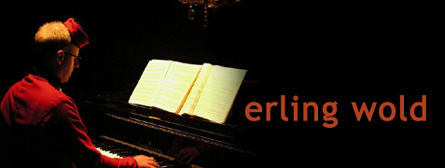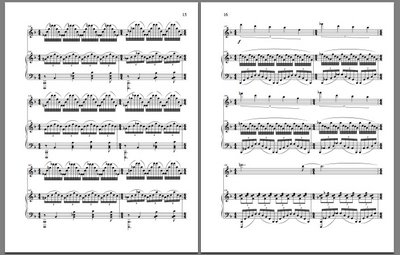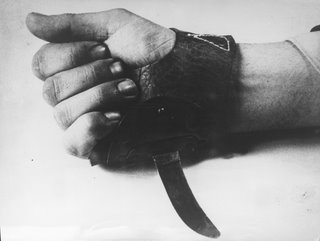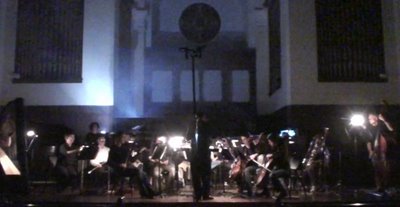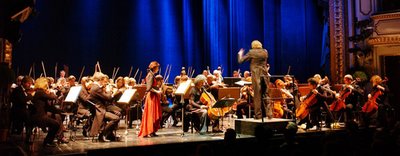 I met Elena and Alexei when they performed in the 2001 Austrian production of A Little Girl Dreams of Taking the Veil, Alexei on the podium and Elena covering the viola, my favorite bit of which is the brief and registrally displaced but oh so beautiful solo here:
I met Elena and Alexei when they performed in the 2001 Austrian production of A Little Girl Dreams of Taking the Veil, Alexei on the podium and Elena covering the viola, my favorite bit of which is the brief and registrally displaced but oh so beautiful solo here:
I had promised them a piece in their roles as the members of a violin-piano duo, and this for many years, giving them only one small number that was a simply bit of program music, an old man dies, a vision of my own death as an old man, gasping for breath but all the while still dreaming of a breast, the iconic breast of a woman. However, I finally forced myself to sit down and write something, not asking them if they still cared or wanted the heavy responsibility of another piece dedicated to them, this one not quite so simple. This spicy opus, The Secret of Success, a reference to a blog entry here by the same name, is subtitled a chaconne, because it is, at least a bit, and in the modern meaning as a set of variations on a repeating harmonic progression, in this case a series of chords rooted on Bb, a combinatorial set that treads between major and minor, similar to those I have used before: once in The Bed You Sleep In and once in the Cotter episode in Queer. The piano plays incessantly, often verbosely, and typically the harmonic changes happen right on the measure line, one per measure, violin and piano almost always changing together, something that Kyle Gann would probably find crazy making. From a recent post of his that was on my mind while I was scribbling:
When I see a kid composing in units of measure, measure, measure, with a new impetus, new phrase, new harmony on every downbeat, I start in with my wheedling tone (every experienced composition student will recognize the sound): "How about a triple upbeat to start that melody off a little more gracefully?" "How about we vary the harmonic rhythm here?" "You think the audience can't hear where your bar-lines are if you don't accent every one?"
